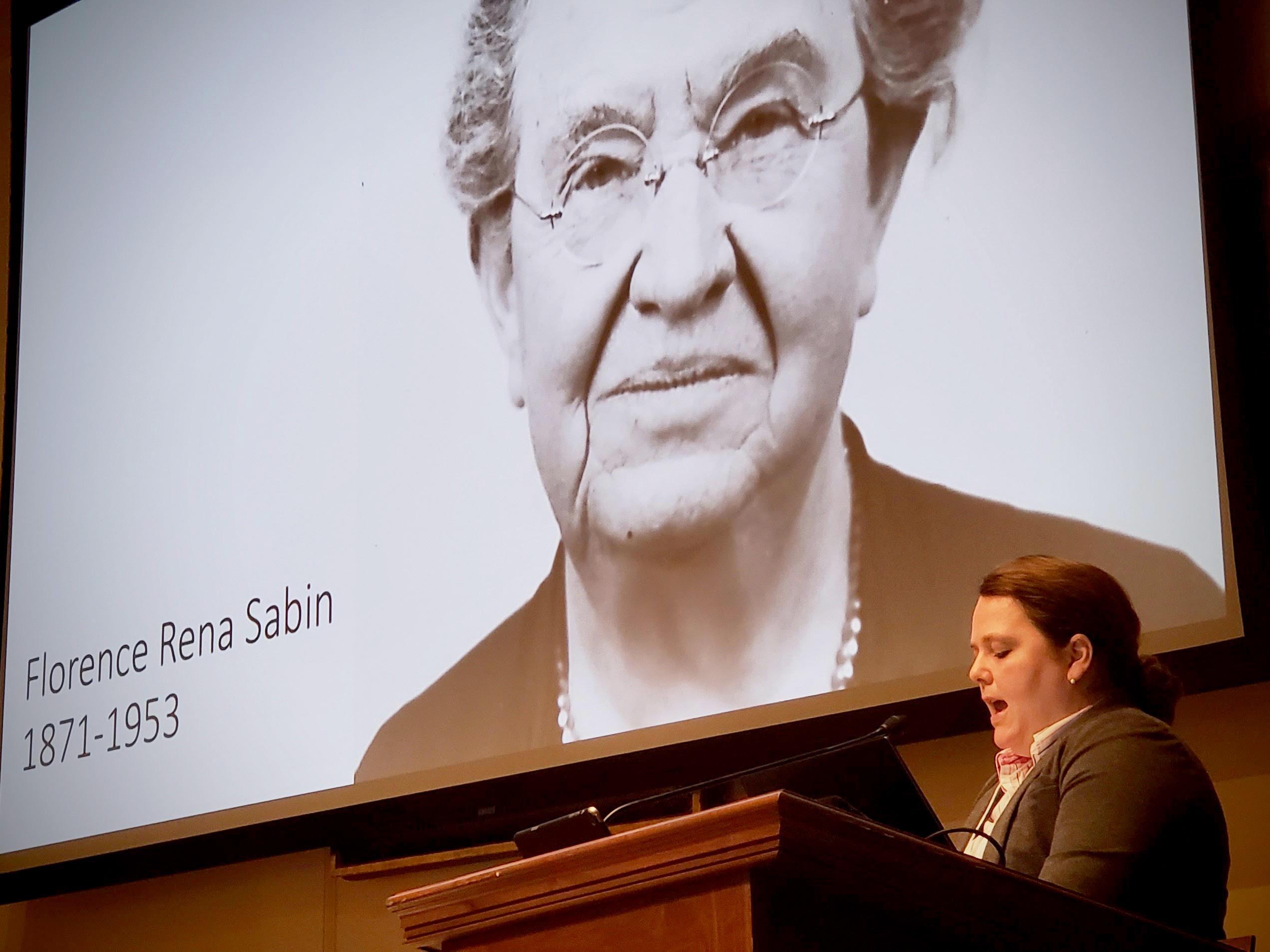Communication studies faculty member Serenity Sutherland discusses her “Visualizing Women in Science” project at a conference of the American Philosophical Society.
Serenity Sutherland, a SUNY Oswego assistant professor of communication studies, recently launched a website for the “Visualizing Women in Science” project at the American Philosophical Society, where she was a key collaborator.
This multi-year interdisciplinary project focused on digital humanities, which often means taking old artifacts, or literature and digitizing them, Sutherland said.
“The goal is to take these artifacts and digitize them and make them accessible online,” Sutherland said. “Making it available online to people is really at the heart of digital humanities, and using the digital techniques and tools to study the humanities.”
The Visualization project focuses on finding and communicating information about women in science in the 19th and 20th centuries. Sutherland was inspired to do this project while working on her dissertation at the University of Rochester on Ellen Swallow Richards.
“I began to think about how the biography I was writing was really interesting, but it was just a piece of this larger picture of how women in science were contributing to each other's work,” Sutherland said.
While researching Richards, Sutherland said she found many letters from other women in science and she wanted to learn more about them. According to the American Chemical Society, Richards is best known for pioneering the field of sanitary engineering. She performed an unprecedented survey in 1890 that led to the first state water-quality standards in the nation.
Telling women's stories
“I really wanted to start to recover some of these women’s stories, and that was a big part of the Visualization,” Sutherland said. “They are represented in the archive, their names appear there, but we just really don’t know anything about them.”
Sutherland collaborated with David Ragnar Nelson, a colleague at the American Philosophical Society. They also had help from graduate students and some interns when it came to writing the biographies of each woman.
“This collection is housed in Philadelphia at the American Philosophical Society, so there are people who work there that know all about this collection,” Sutherland said.
The project covers around 280 women, Sutherland said, which means around 280 biographies to write.
“‘Visualizing Women in Science and Technology’ is a standalone website where viewers can go to the website … and there’s a welcome page and it tells you all about the project,” Sutherland said. The launch took place on the 2023 edition of International Women's Day.
Sutherland also credited graduate assistant Mackenzie Mahony, a master's in strategic communication student at SUNY Oswego, "who has not only contributed to the project as a GA, but also won a Student Scholarly Creative and Activity Grant to help continue building out this resource."
This work also will inform an upcoming exhibition titled "Pursuit & Persistence: 300 Years of Women in Science."
“The Visualization is going to be part of a museum exhibit at the American Philosophical Society,” Sutherland said. “They have a museum exhibit on women in science that they are going to be launching in late March.”
For more information, visit the “Visualizing Women in Science" website.
-- Written by Gabrielle Kroeger of the Class of 2023




